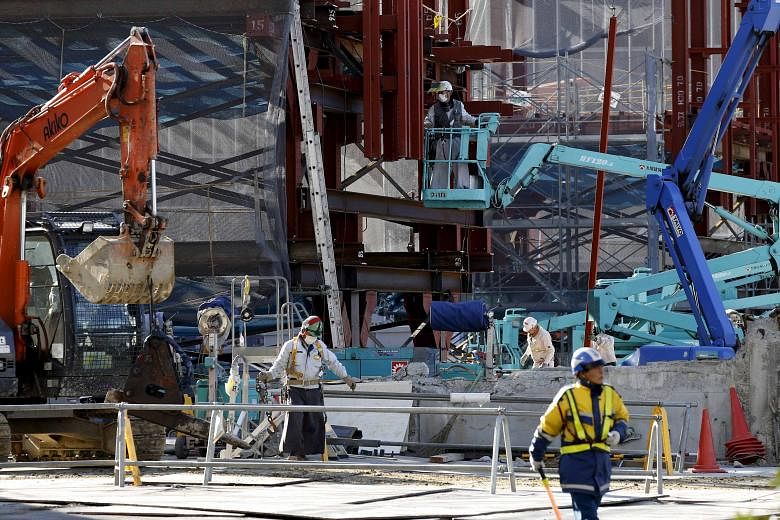The Bank of Japan's (BOJ) shock move on Friday to adopt negative interest rates was a dramatic reminder of the way central banks across Asia have tried to use rock-bottom rates to resuscitate lacklustre economies.
They are all deeply worried by the spectre of deflation - not least Japan, which in the 1990s suffered the economic death spiral the scourge of falling prices can bring.
The United States and Europe, among others, took a similar stimulatory approach in the wake of the global financial crisis.
But the gloom in Asia has yet to lift - by some measures it even looks to be worsening - and central bankers are running out of policy options.
Some economists say Asia has been relying too much on monetary policy. Instead, they argue, governments should be ramping up spending and pushing through reforms to give struggling regional economies a shot in the arm.

Central banks across the region - including the Bank of Korea, Reserve Bank of India and the Bank of Thailand, among others - have jumped on the monetary easing bandwagon over the past year, mostly to battle a disinflationary environment brought on by the collapse in oil prices and poor global growth.
China, Asia's biggest economy, has cut official interest rates six times since November 2014.
The BOJ is under growing pressure to reach its 2 per cent inflation target as soon as possible to give the world's third-largest economy its best shot at recovery.
While there is still scope for some of the regional monetary authorities to cut interest rates or intervene in the currency markets, further easing will likely prove less effective than in the past, economists say.
Rates are already near record lows in most Asian economies, noted Mr Frederic Neumann, co-head of Asian economics research at HSBC.
Even if these were cut further, it is doubtful that this would spark a significant acceleration in bank lending.
"Caution reigns among lenders and borrowers alike. What's more, weaker exchange rates, a by-product of monetary easing in usual circumstances, are not helpful in a world lacking demand," he added.
OCBC economist Selena Ling said bank loan growth has already "slowed dramatically".
"The tightening has probably been a double whammy in that business sentiments have turned more cautious, (while) financial institutions are also more careful about potential non-performing loans in a growth slowdown," she added.
Mr Neumann said monetary policy in Asia is not entirely exhausted - some central banks could push interest rates down further, bringing them to zero, or even launch large-scale bond-buying programmes.
"Even if further easing wouldn't boost lending to the same degree as after the global financial crisis, at the margin it could still help," he noted.
However, Asian economies are still missing other elements of a successful recovery strategy.
"Nearly everywhere, fiscal policy has been too timid and structural reforms woefully neglected," said Mr Neumann.
For instance, there is tremendous demand for infrastructure in the region, but most of these needs remain unmet. By 2025, infrastructure needs in Asia are expected to reach US$5.36 trillion (S$7.6 trillion) annually.
Credit Suisse senior economist Santitarn Sathirathai said Asia is expected to gradually rely more on government spending instead of monetary policy to boost growth this year.
"We see a number of economies with fiscal policy capacity that have stepped up their fiscal stimulus programmes, including South Korea, the Philippines, Indonesia, Singapore and Thailand.
"This does not mean that there won't be more rate cuts - we think there will be in India, Indonesia, South Korea and, possibly, Thailand - but that the burden will be better shared by both policy engines rather than just one."
In Singapore, for instance, government spending on construction has helped support the industry amid a private-sector slowdown.
Public-sector construction demand is expected to account for nearly two-thirds of the value of all construction contracts to be awarded this year, the highest proportion in 14 years.
Total construction demand last year was about $27.2 billion, with public-sector projects accounting for slightly more than half of the demand.
However, OCBC's Ms Ling pointed out that not all regional economies have enough in their war chests to use government spending as a policy lever.
Malaysia's national revenue, for instance, has been hit hard by plunging crude prices as the country is a major oil exporter.
Still, "if we look at fiscal policy as including structural and economic reform, then there is definitely still space to step up", she added.

